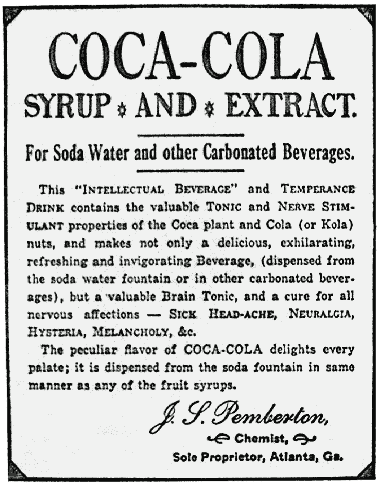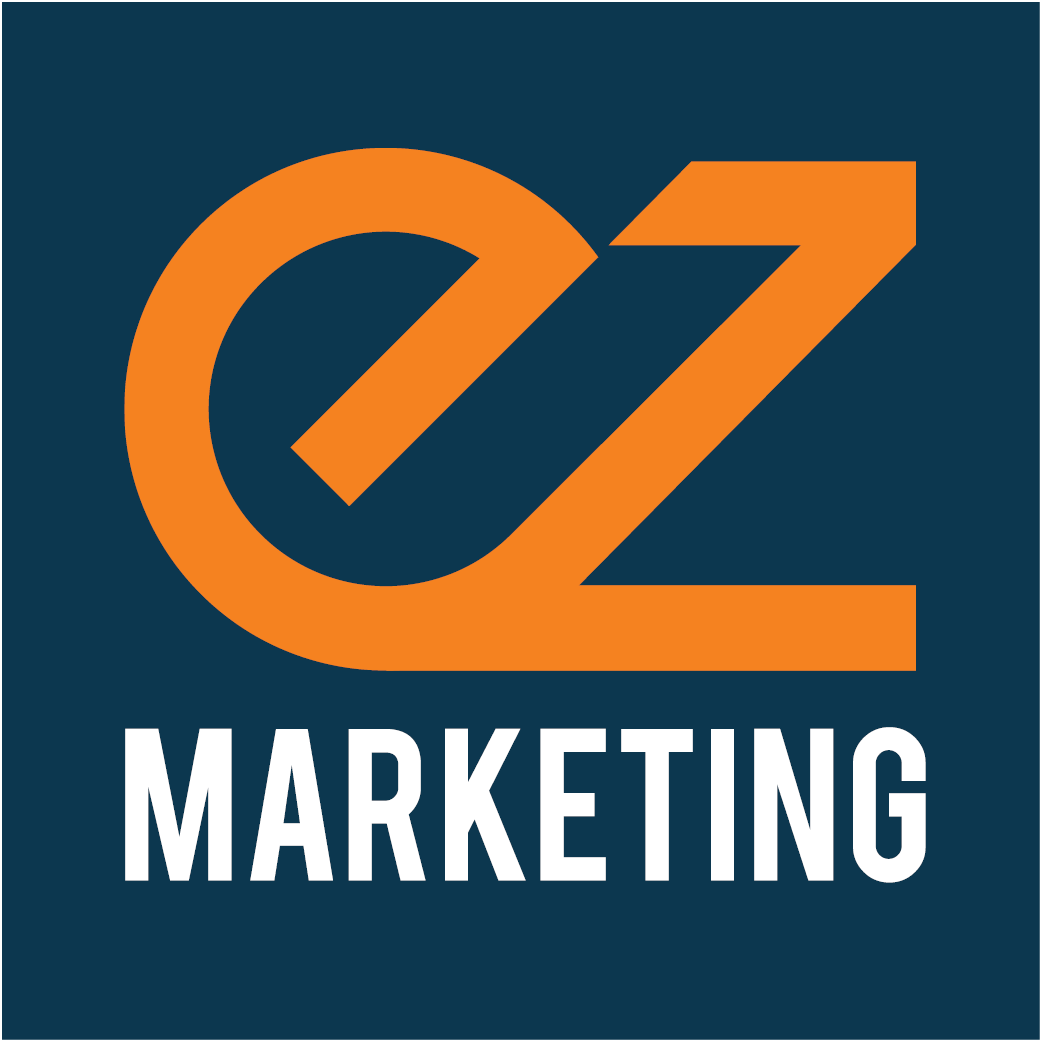You might have this fantastic idea that has everyone at work talking. But when you finally launch the new digital marketing campaign to the world, you receive less-than-thrilled responses. Maybe your excitement got the better of you or no one in the company stopped to wonder how others might perceive your new campaign.
Either way, we’ve compiled a list of the top failed marketing campaigns in recent years, to show you how some of the biggest names in business today set themselves up for failure—and lessons we can learn from bad marketing.
1. DEPARTMENT OF EDUCATION - SPELLING REALLY DOES MATTER
Typos happen. Every marketer has made a few grammar gaffes along the way, and the occasional slip-up is forgivable. Unless you’re the Department of Education.
Already facing scrutiny amidst the controversial appointment of Betsy DeVos as Secretary of Education, the Department caused a social media storm with a couple of misplaced letters. In a tweet highlighting the importance of education, they misspelled the name of famous historian and civil rights activist W.E.B. Du Bois. Twitter’s response was ruthless.
Education must not simply teach work - it must teach life. – W.E.B. DeBois pic.twitter.com/Re4cWkPSFA
— U.S. Department of Education (@usedgov) February 12, 2017
To make matters worse, when they tweeted an apology, they misspelled the word “apologies,” which only furthered the ridicule.
Marketing Lesson:
Always edit your work. Whenever possible, have a few sets of proofreading eyes on marketing ads and campaigns before they go live to avoid simple fails like this.
2. American Airlines - free first-class travel
A one-time fee for unlimited first-class air travel. Sounds like a no-brainer, right? Well, American Airlines learned the hard way that short-term thinking can result in long-term problems.
In 1981, the airline introduced the AAirpass, offering unlimited first-class flights for a flat rate of $250,000 USD. At the time, they were strapped for cash, and they hoped to raise millions during a time of record-high interest rates. The problem? The people who’ve purchased and used these passes have more than since made up for the investment— by 2007, a few AAirpass holders were taking 1,000’s of free flights every year, costing the company millions in lost sales.
American Airline’s response was to launch an investigation into these frequent fliers and revoke their passes, resulting in outrage and lawsuits.
Suddenly, a marketing campaign meant to build airline loyalty became a one-way system. That’s a no-no in the business world. Successful companies treat their customers as they want to be treated, which is why loyalty and reward programs succeed so often—they “return the favor” so to speak.
Instead of offering the golden ticket of airline passes, American could have simply doubled frequent flyer miles or offered more sustainable incentives for their loyalty programs. American’s interest in making a quick buck backfired and wound up alienating long-time customers, not to mention the huge loss in profits from all the free flights given to AAirpass holders.
Marketing Lesson:
Short-term, one-sided thinking is a recipe for a bad marketing campaign. If you’re offering an incentive to your customers, set reasonable boundaries so both sides can benefit, but make sure you’re prepared to deliver on your promises.
3. Coca-Cola - changing the formula
Coke went nuclear during the cola wars against its competitor, Pepsi. While Pepsi played smart with ad campaigns like the Pepsi Challenge in 1975, Coke only succeeded in demonstrating how confused they were. At first, Coke railed against sweeter colas—until they developed New Coke. New Coke was a sweeter version of Coke they claimed had been sampled in over 200,000 taste tests, and which had received glowing reviews.
The problem? Tasting a soda is one thing, but that taste had to measure up to how people actually consumed soda, which was by the can or bottle. When customers started to purchase cans and bottles of New Coke they were instantly turned off by how sweet the new brew was.
Coke could have just fought fire with fire—with better ad campaigns. But as soon as they touched the actual product, they risked the integrity of their brand. While they took out cocaine of their recipe a very long time ago, a study by Medical News Today shows that Coca-Cola is still 'comparable to heroin' because it stimulates the brain and your pleasure similarly to the drug.
Marketing Lesson:
When you have a product as successful (and addictive) as Coca-Cola, be cautious about changing it. Experimenting with new products is normal, but not at the expense of the core product that built the business’s success.
4. PEPSI - Kendall Jenner Ad Outrage
We couldn’t mention Coke without talking about their constant competitor, Pepsi, who fell flat with one of the biggest marketing fails in recent history. In 2017, the soda giant released an ad which depicted TV star and model Kendall Jenner joining a street protest and seemingly defusing tensions between protesters and police by handing a police officer a Pepsi.
The ad sparked a firestorm of anger and outrage, as people felt it trivialized important topics like racism, police violence, and Black Lives Matter. While Pepsi stated they intended to send a message of “peace, unity, and understanding,” the ad came off as incredibly insensitive.
While Pepsi pulled the ad, you can still watch it on YouTube:
Marketing Lesson:
While modern companies often try to connect with important causes, jumping on the latest hot-button topics is a dangerous move. Many ad campaigns have failed because they take advantage of important social issues or politically-charged news events to try to sell their products.
5. HOLD YOUR WEE FOR A WII - A PR STUNT GONE WRONG
In 2007, a California radio station held a contest called “Hold Your Wee for a Wii” where they promised a Nintendo Wii console to whoever could drink the most water without going to the bathroom. Turns out, too much water can be a very bad thing. One contestant, 28-year-old Jennifer Strange, actually died from water intoxication as a result.
Suddenly, an ill-conceived PR stunt became a tragedy that not only cost a life but cost the radio stations millions in lawsuit losses.
Marketing Lesson:
All press is not good press. Take a minute to think before you do something purely for publicity. It’s not worth potentially endangering someone else’s life or well-being.
6. Colgate - frozen dinners
You know that company that makes toothpaste? Yeah, that one. Well, they tried their hand at making frozen dinners.
They might have succeeded if they hadn’t been so good at their flagship product, toothpaste. People just didn’t associate tasty food with a brand that had, up until that point, brought them products that belong in the bathroom medicine cabinet.
A simple fix would have been to invest in a subsidiary company, or purchase a smaller one—giving the consumer a different brand to focus on while they pumped out a new product. Colgate could have just simply stuck with making our smiles brighter and left well enough alone.
Marketing Lesson:
Focus on what you’re good at. If you’re branching out in a totally new direction, think about separating your branding and marketing for the different products.
7. SONY - WHITE VS. BLACK PSP AD
Marketing is a field that can reward the bold, but when your ad metaphors take human form, you run the risk of drawing fire. In a famously failed advertising campaign in 2006, Sony celebrated the release of their new white PSP device with giant billboards that were a giant mistake.
The billboards all had a central theme: a white woman subduing a black woman, representing the new white PSP model’s dominance over the older black portable console. While Sony didn’t intend the ad campaign to be racist, the fact that so many people were offended by the photographs speaks for itself.

Perhaps the worse misstep was how Sony handled all the negative PR coming their way. Rather than simply apologize and roll with the punches, they seemed to defend the ads and the “stunningly photographed imagery.”
To add insult to injury, the campaign resurfaced again in 2017 with a single viral tweet. Many people who were seeing the ad for the first time thought it was current and rekindled the firestorm.
Marketing Lesson:
Remember that when you’re being artistic in your marketing campaigns, other people may interpret your message differently. And sometimes that interpretation isn’t positive. When you do face negative PR, respond quickly with understanding and humility.
8 . Starbucks - collapse into cool
Imagine a picture of two ice cold, frosty Starbucks drinks standing side by side on a field of grass, surrounded by summertime insects. Above the image is a caption: “Collapse into cool.” Nothing wrong yet, right?
Apparently, Starbucks exhibited some not-so-cool behavior when they charged EMT workers $130 for water following the collapse of the WTC towers on September 11. It seems that bad press followed them, resulting in public outcry over their “Collapse into cool” campaign (note the word ‘collapse’) that came out in April 2002. It left a bad taste in many people’s mouths as they took the combination of words and imagery as a reference to 9/11.
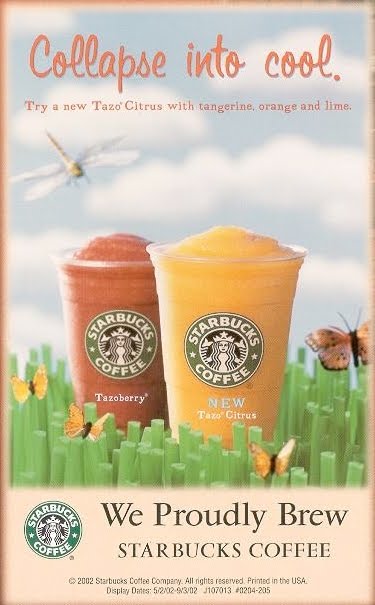
This brand blunder is a difficult one to pick apart given the events that lead to up to this marketing failure. Starbucks might not have gotten any flack had they given EMT workers free water, or maybe picking any other word besides collapse would have sufficed.
Marketing Lesson:
Like Sony’s marketing misstep, this one is another reminder that ads can be misinterpreted. Be sensitive to your customers, the culture, and current events when creating your marketing message. You may even want to show a major campaign it to a few trusted customers first as a test case.
9 . Nike - runner charged with firearm murder referred to as “a bullet”
Double-amputee Olympian Oscar Pistorius was featured in a Nike ad that depicted various athletes in motion, with a voice-over stating that an athlete’s body was their weapon. For Pistorius, his caption read, “I am the bullet in the chamber.” This is the same Olympian who was later charged with murder, using a firearm.
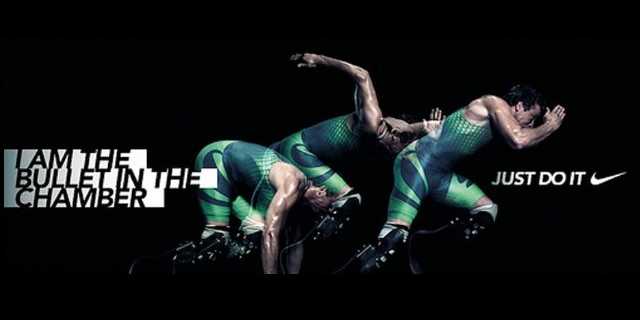
While there is some morbid irony at play here, it was out of Nike’s hands for the most part. Unfortunately, some marketing mistakes simply can’t be foreseen or avoided. All the company could do was release a few press statements and pull their sponsorship.
Nike certainly isn’t alone in having its brand or marketing campaign spoiled by celebrity endorsements. Companies take risks when they endorse individuals or groups. Those people often become face’s for the company and their mistakes can easily reflect back on the business.
Marketing Lesson:
Most small businesses aren’t looking for celebrity endorsements, but you still might associate with public figures, community groups, or well-known industry influencers. Just be aware of who’s acting on behalf of your company and seek to align yourself with trustworthy partners.
10. BLOOMINGDALES - DATE RAPE AD BLUNDER
In a 2015 holiday catalog, Bloomindale’s published an ad with a serious-looking man staring at a laughing woman who is faced away from him. A little creepy maybe, but it isn’t too bad until you read the caption: “Spike your best friend’s eggnog when they’re not looking.”
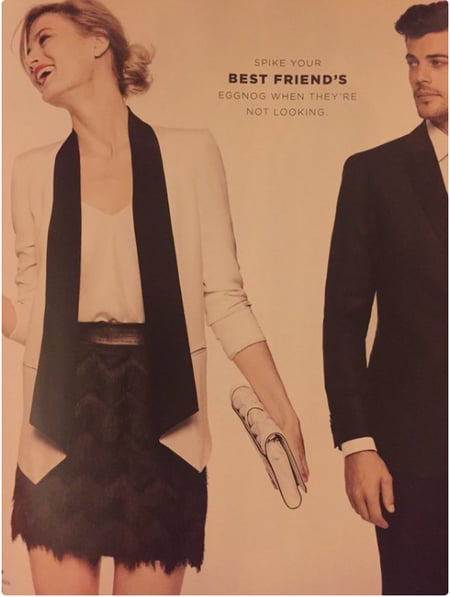
Marketing Lesson:
Make sure your marketing team puts multiple sets of eyes on a campaign before it runs. Editing for grammar and spelling is important, but getting multiple opinions helps ensure that potentially offensive and tone-deaf messages are caught before they ever get published.
11. Gap - a gap in brain signals
Last on the list is Gap’s brand blunder, which was a revised logo. This particular campaign was fairly straightforward—the company wanted to freshen up their look and tested out a new logo.
The problem? It seems that our brains are hardwired to react negatively to this sort of change. Particularly, sharp edges. When neuroscientists at NeuroFocus studied how volunteers’ eyes reacted to the new Gap logo, their findings showed that the new logo didn’t register as new or cool to the brain.
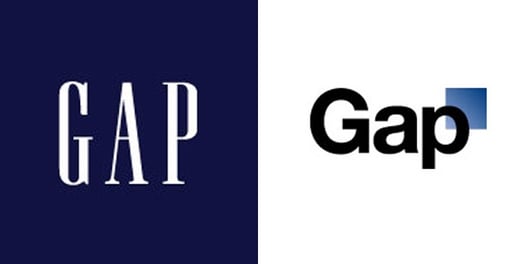
For a company in the apparel business, a lack of style is a huge loss of brand value.
A simple fix to this mistake would have been... to do absolutely nothing. Like Coca-Cola learned, don’t fix what isn’t broken.
Despite Gap’s intentions, they tried to redesign a familiar logo and the results weren’t positive. When it comes to visual ad campaigns and logos, everything from the colors used to the font of the text can affect how we perceive things. Careful thought has to go into every visual element or else marketing campaigns could ride or die on something as trivial as an out-of-place line.
Marketing Lesson:
When it comes to logos and the graphic design of your marketing, everything from the colors you use to the font of the text can affect how your customers perceive your business. Put careful thought into every visual element, because marketing campaigns really can live or die based on something as trivial as your color choice.
Final Thoughts
Across all of these bad marketing campaigns, the moral of the story is to always put a lot of thought into your marketing. Be intentional about your message, your offer, and the words and images you use to communicate.
Every business wants to make a big impact or go viral, but make sure you are getting attention for the right reason - not because of marketing fails like these that people just won’t forget.
What's the best way NOT to fail at marketing? Start with a solid strategy. Download our free marketing plan template to get started!
Of course the other way to avoid failing is to talk with our marketing agency in Lancaster, PA.

